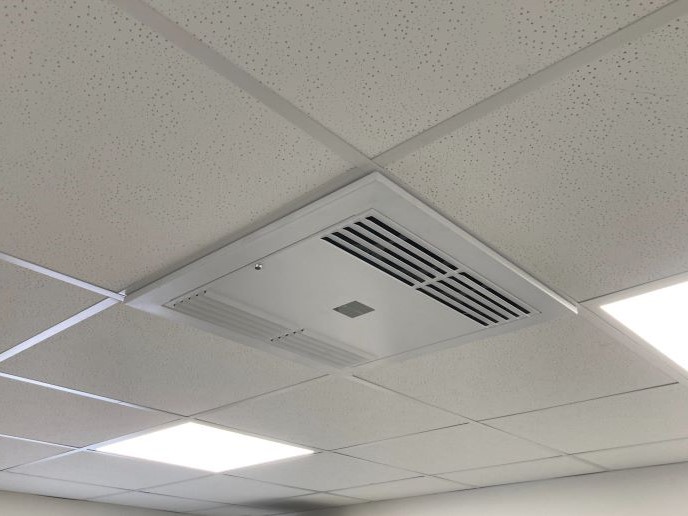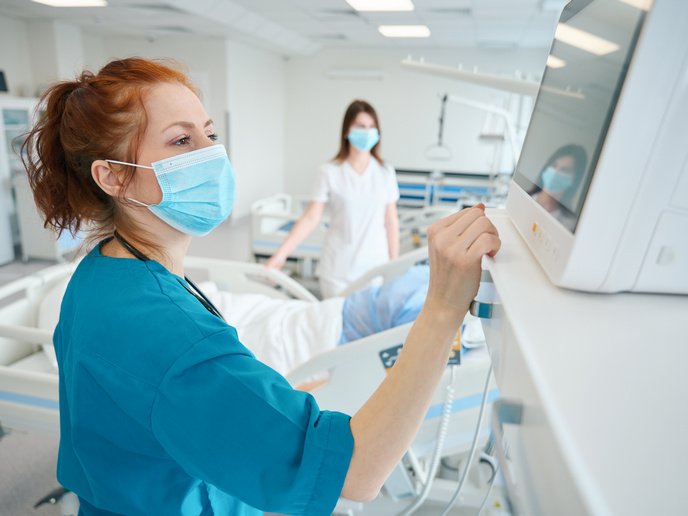A safe, silent killer rids the air of bacteria, viruses and mould spores
The COVID-19 pandemic highlighted the risk of airborne infection in enclosed spaces, where most transmission took place, including within hospitals. Now a new type of air purifier can swiftly kill all airborne pathogens using a novel low-maintenance technology that uses no chemicals and leaves no contaminating by-products. The EU-funded CleanAir(opens in new window) project developed a device known as Laminar Electrode Array, or LEA, a patented special configuration of microelectrodes. “Contaminated air goes in one end, killing bacteria and viruses and mould spores as it is blown through the device,” explains project coordinator Markus Villinger, CEO of Villinger GmbH(opens in new window) in Austria, one of the main consortium partners. “It deactivates organic material using very high voltage and kinetic impact,” he adds, noting it is also “super quiet.” Compared to air purifiers currently on the market, “ours has the highest reduction in bacteria and viruses – 99.99992 %, which is the limit of detection; it’s probably more than that,” remarks Villinger. “It does this without producing any ozone. There’s no maintenance required or filter where debris builds up.” Existing high-efficiency particulate air (HEPA) filters, commonly used indoors, cannot deactivate very small particles such as Coronavirus, so organic debris can cluster inside the device. “This can be a potential source of contamination,” Villinger says. Other existing purifiers use UV light, but these, in common with ionisers, produce harmful ozone. Some natural devices, such as the one developed as part of the EU-funded NATEDE project, are suitable for home use but not large, crowded areas.
Testing at a special biosecurity lab
The LEA device was tested in a laboratory in Kansas, United States. “Normally the test is for 150 minutes, where they put the virus in a room, then measure how the virus load is reduced. In only 90 minutes they could not detect anything. It’s a very good result,” adds Villinger. The first tests were on viruses, but as COVID-19 cases began to wane during the course of the project, tests on bacterial load and fungal spores were also carried out successfully, including on staphylococcus and other bacteria that spread in hospitals.
Developed for hospitals
The purifier for hospitals can be inserted in the ceiling, like an air conditioner. It has already been sold to hospitals in Austria, Germany and Italy. “We started with hospitals because there was demand in Italy where a lot of people were dying from COVID-19 because they got infected in hospital,” explains Villinger. It will not only protect health practitioners and others, it could help contain future coronavirus or other airborne hospital germs. The devices are currently manufactured in-house on a small scale. “We are not set up for big quantities, so to scale up, we’re looking for partners who can make it under licence,” says Villinger.
Smaller versions for transport
Smaller versions are being developed in collaboration with the automotive industry for use on buses and trains and in airplanes. “We are also looking for a partner to put this in elevators. People use elevators all the time, so it will be very effective there,” according to Villinger. It could also be useful beyond Earth. “We have the Clean Air in Space project with the European Space Agency(opens in new window), working with them to improve air quality in the International Space Station with our technology,” he says, noting that astronauts spend many months in enclosed spaces.







